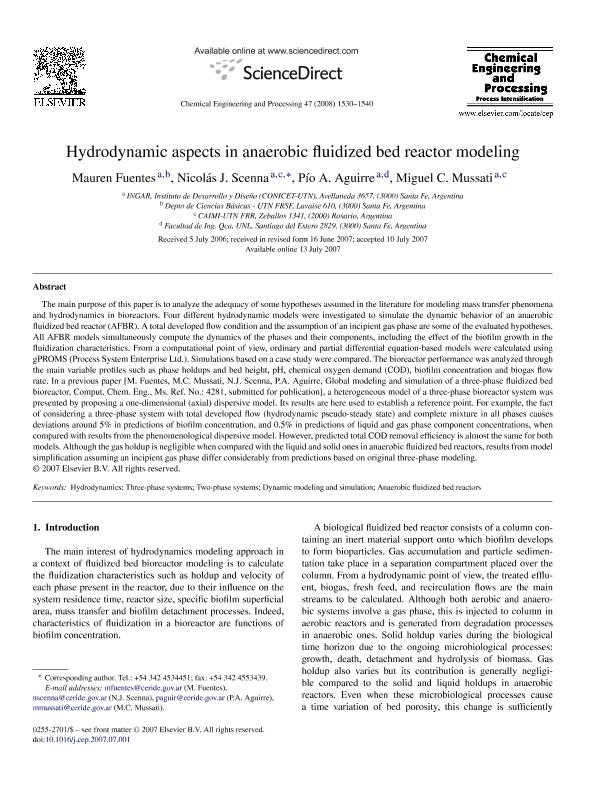Artículo
Hydrodynamic aspects in anaerobic fluidized bed reactor modeling
Fecha de publicación:
12/2008
Editorial:
Elsevier Science Sa
Revista:
Chemical Engineering and Processing
ISSN:
0255-2701
Idioma:
Inglés
Tipo de recurso:
Artículo publicado
Clasificación temática:
Resumen
The main purpose of this paper is to analyze the adequacy of some hypotheses assumed in the literature for modeling mass transfer phenomena and hydrodynamics in bioreactors. Four different hydrodynamic models were investigated to simulate the dynamic behavior of an anaerobic fluidized bed reactor (AFBR). A total developed flow condition and the assumption of an incipient gas phase are some of the evaluated hypotheses. All AFBR models simultaneously compute the dynamics of the phases and their components, including the effect of the biofilm growth in the fluidization characteristics. From a computational point of view, ordinary and partial differential equation-based models were calculated using gPROMS (Process System Enterprise Ltd.). Simulations based on a case study were compared. The bioreactor performance was analyzed through the main variable profiles such as phase holdups and bed height, pH, chemical oxygen demand (COD), biofilm concentration and biogas flow rate. In a previous paper [M. Fuentes, M.C. Mussati, N.J. Scenna, P.A. Aguirre, Global modeling and simulation of a three-phase fluidized bed bioreactor, Comput. Chem. Eng., Ms. Ref. No.: 4281, submitted for publication], a heterogeneous model of a three-phase bioreactor system was presented by proposing a one-dimensional (axial) dispersive model. Its results are here used to establish a reference point. For example, the fact of considering a three-phase system with total developed flow (hydrodynamic pseudo-steady state) and complete mixture in all phases causes deviations around 5% in predictions of biofilm concentration, and 0.5% in predictions of liquid and gas phase component concentrations, when compared with results from the phenomenological dispersive model. However, predicted total COD removal efficiency is almost the same for both models. Although the gas holdup is negligible when compared with the liquid and solid ones in anaerobic fluidized bed reactors, results from model simplification assuming an incipient gas phase differ considerably from predictions based on original three-phase modeling.
Palabras clave:
Hydrodinamycs
,
Bioreactors
Archivos asociados
Licencia
Identificadores
Colecciones
Articulos(CCT - ROSARIO)
Articulos de CTRO.CIENTIFICO TECNOL.CONICET - ROSARIO
Articulos de CTRO.CIENTIFICO TECNOL.CONICET - ROSARIO
Articulos(INGAR)
Articulos de INST.DE DESARROLLO Y DISEÑO (I)
Articulos de INST.DE DESARROLLO Y DISEÑO (I)
Citación
Fuentes Mora, Mauren; Scenna, Nicolas Jose; Aguirre, Pio Antonio; Mussati, Miguel Ceferino; Hydrodynamic aspects in anaerobic fluidized bed reactor modeling; Elsevier Science Sa; Chemical Engineering and Processing; 47; 9-10; 12-2008; 1530-1540
Compartir
Altmétricas




